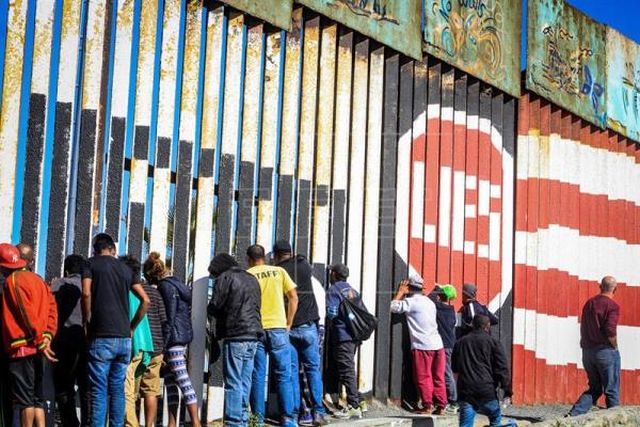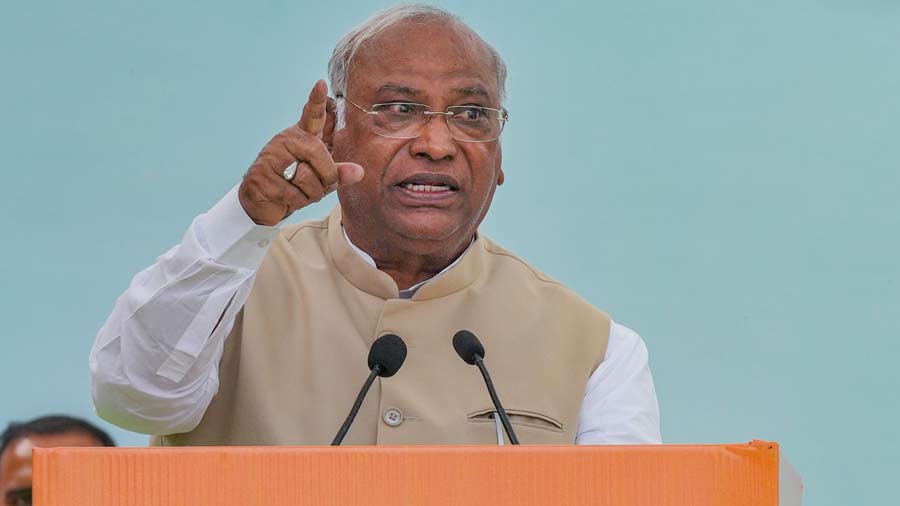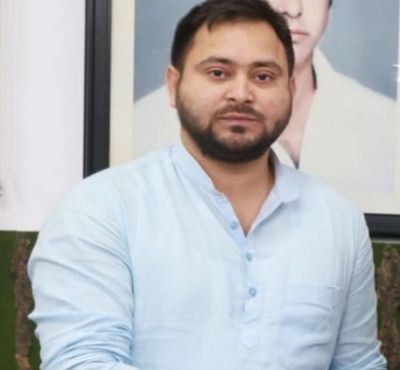
India Remains Host and Source of Most Hindu Migrants; GCC Nations, USA Emerge as Key Emigration Hubs: Study
The study also sheds light on the migration patterns of other religious groups in India, highlighting the country as a case where migrants are disproportionately drawn from religious minorities.
NEW DELHI – A study by US-based think tank Pew Research Center has revealed India as the leading source of Hindu migrants, with 7.6 million Hindus born in the country currently living abroad. The report also noted that India is the second-most common country of origin for Muslim migrants, with 6 million Muslims living abroad.
Pew Research’s latest report, titled ‘Religious Composition of the World’s Migrants’, highlights key trends and shifts in the global migration patterns of Hindus, among other religions, The New Indian Express Reported.
As of 2020, Hindus make up 5% of all international migrants, totaling 13 million. This percentage is notably lower compared to their 15% share of the global population, indicating their under-representation among global migrants, Pew’s study suggests.
The study also found that Hindu migrants tend to travel longer distances compared to other groups, averaging 3,100 miles from their country of origin, which is significantly more than the global average of 2,200 miles.
While the Asia-Pacific region (APAC) was the primary destination in the past, the Middle East, North Africa, and North America have seen significant increases in Hindu migrant populations.
The report suggests that Hindus are far more likely to have left Bangladesh and Pakistan than they are to have left India or Nepal.
“Hindus form a small minority of the overall population in Bangladesh (8%) and Pakistan (2%), but they make up 21% and 8% of international migrants from those countries, respectively. On the other hand, Hindus form large majorities in India (79%) and Nepal (81%), but they make up only 41% and 56%, respectively, of migrants leaving those places,” it says.
Disproportionate migration among other religions
The study also sheds light on the migration patterns of other religious groups in India, highlighting the country as a case where migrants are disproportionately drawn from religious minorities.
Hindus, despite being the majority religion in India, are less likely to emigrate compared to other groups. Specifically, only 41% of Indians who migrated abroad in 2020 were Hindus.
This percentage is significantly lower than the Hindu share of India’s population, indicating that Hindus have a lower propensity to migrate internationally compared to their demographic weight in India.
In contrast, Muslims and Christians show higher migration rates.
The study reports that 33% of Indians who emigrated in 2020 were Muslims, and 16% were Christians. These figures are higher than their respective shares of the overall Indian population (Muslims 14.2% and Christians 2.3% based on the 2011 Census), reflecting a greater tendency among these communities to seek opportunities outside India.
The study highlighted that Muslims are significantly more likely to emigrate compared to the Hindu majority in India. Most of these Muslim migrants settle in Muslim-majority countries with job opportunities, including the UAE (1.8 million), Saudi Arabia (1.3 million), and Oman (720,000).
Hindu Migration to India
The report highlights that Hindus constitute 61% of the migrant population residing in India. This figure is notably high, reflecting the fact that Hindus make up approximately 79% of India’s total population.
The high percentage of Hindu migrants in India underscores the country’s role as a major destination for Hindus who have migrated, largely due to historical events such as the partition and subsequent regional shifts.
Origin and Major Destinations
According to Pew Research, the majority of these migrants originate from APAC, particularly India, which remains the largest source of Hindu migrants, with 7.6 million individuals.
Bangladesh follows as the second-largest source, contributing 1.6 million Hindu migrants, while Nepal is the third-largest source, with 1.5 million. Pakistan provides approximately 940,000 Hindu migrants.
In terms of destinations, India remains a major hub, hosting 22% of Hindu migrants, equivalent to 3 million individuals.
The study, referencing the mass migrations following the 1947 partition and the 1971 Bangladesh independence war, notes that many Hindus from what became Pakistan and Bangladesh moved to India, while many Muslims from India relocated to Pakistan or Bangladesh.
“For decades after that, the number of Hindu migrants living in India remained high, though it has been declining recently as the generation of Hindus who moved during Partition gradually dies,” the study noted.
Apart from India, the United States is the second-largest destination, accommodating 2.6 million Hindu migrants.
Additionally, the United Arab Emirates and Saudi Arabia are significant destinations for Hindu migrants, where they are often temporary workers, though many routinely renew their work permits.
The only countries aside from India in which Hindus are the largest group of migrants are Nepal and Bhutan. However, these countries have relatively small populations overall, and they are not among the top destinations for Hindu migrants.
Regional Distribution
According to Pew Research, the Asia-Pacific region remains the most significant destination for Hindu migrants, with 44% of them residing there.
This region is followed by the Middle East and North Africa, which hosts 24% of Hindu migrants. North America is the third-largest destination, accommodating 22% of the Hindu migrant population.
In contrast, Europe hosts about 8% of Hindu migrants, while Latin America and Sub-Saharan Africa have very few Hindu migrants.
Migration Routes
The research highlights several prominent migration routes for Hindus.
The most common route is from India to the United States, with 1.8 million Hindus making this journey. Another significant route is from Bangladesh to India, where nearly 1.6 million Hindus have migrated.
Additionally, there is substantial movement from India to Gulf Cooperation Council (GCC) countries, with approximately 3 million Hindus residing in this region, where foreign workers make up half or more of the area’s workforce.
The long distances and high numbers of Hindu migrants in countries like the US and GCC nations suggest that economic opportunities, rather than crises or conflicts, largely drive Hindu migration.
Changes Since 1990
There has been a shift in Hindu migration patterns since 1990.
As per the report, the total number of Hindu migrants globally increased from 9.1 million in 1990 to 13.5 million in 2020, reflecting a 48% rise. However, this growth rate is slower compared to the overall increase in global migrants, which grew by 83% during the same period.
Regional patterns have shifted notably, with a decline in Hindu migrants residing in the APAC from 80% in 1990 to less than half by 2020.
“In 1990, nearly eight-in-ten Hindu immigrants lived in the Asia-Pacific region. By 2020, that share had dropped to less than half. This change is partly because many migrants who moved during Partition had died by 2020. Three decades earlier, about 4 million Hindus who had been born in Pakistan or Bangladesh were residing in India. By 2020, the number had roughly halved, to 2.1 million,” the study suggested.
Conversely, the number of Hindu migrants in the Middle East-North Africa region has surged from 0.7 million to 3.3 million, due to several emigrants moving to GCC countries for work.
Among the GCC nations, Qatar saw the most Hindu migrants, from 1,000 in 1990 to 290,000 in 2020, while the UAE recorded the steepest increase of Hindu migrants, growing from 140,000 to 1.1 million during this timespan.
Meanwhile, North America saw an increase from 0.8 million to 3.0 million during this period, due to a rise in the number of Indian-born Hindus living in the US.
Similarly, the number of Hindu migrants in Malaysia has risen 15 times, from 30,000 to 470,000, driven primarily by migrant workers from Nepal who arrived in search of jobs. In 2020, Malaysia was the seventh-largest destination for Hindu migrants.




